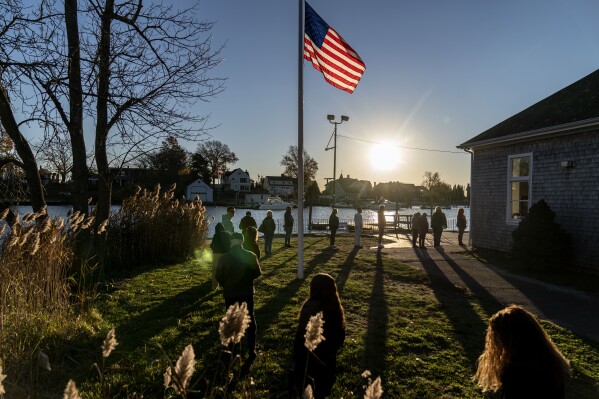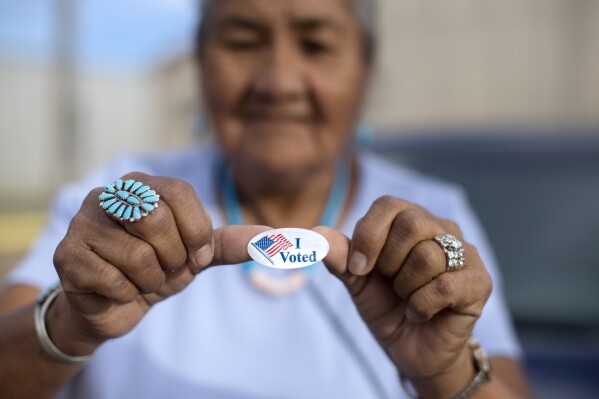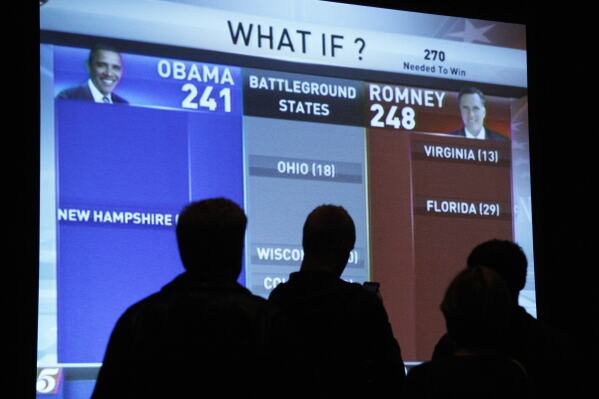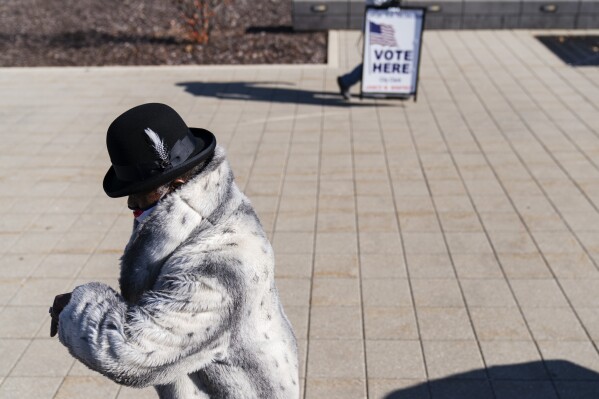WASHINGTON (AP) — When it comes to understanding elections, it’s not just about who won and lost. To explain what really happened, it’s important to understand who voted and how, what they cared about and how they felt about important issues facing the country.
At The Associated Press, AP VoteCast is a key part of answering those questions, explaining the voting coalitions that elected the president, determined congressional control and decided state-level ballot measures.
Launched in 2018, AP VoteCast is an extensive survey of both voters and nonvoters that aims to tell the story behind election results. Conducted for the AP and Fox News by the AP-NORC Center for Public Affairs Research, it’s a detailed snapshot of the American electorate that helps explain who voted, who didn’t vote, what issues they care about, how they feel about the candidates and why they voted the way they did — or didn’t vote at all.
What is an exit poll and how does it differ from AP VoteCast?
Although it serves a similar purpose, AP VoteCast is not an exit poll.
Traditional exit polls, including the one conducted by a consortium of news networks in the United States, rely largely on in-person interviews with voters conducted outside of select polling places after they’ve voted, supplemented with a phone survey to reach mail-in voters. Before AP VoteCast the AP worked with other major news organizations to conduct Election Day exit polls.
AP VoteCast was created in part to reflect significant changes over the years in how people vote, from a world where most people vote by showing up at the polls on Election Day to one where a growing number vote before Election Day.
In 1972, for example, about 95% of voters nationwide cast a ballot in-person on the day of the election. Since then, the number of those voting before Election Day has grown steadily, especially in the past few elections. In 2018, roughly 4 in 10 voters cast their ballots before the November general election. In 2020, during the coronavirus pandemic, the number shot up to about 7 in 10. In the 2022 midterms, about half of voters cast pre-Election Day ballots.
AP VoteCast captures the views of voters — whether they vote in person on Election Day or weeks ahead of time — by beginning to interview registered voters several days before Election Day. Those interviews conclude as polls close in each state. Interviews are offered in English and Spanish, as needed.
This approach allowed AP VoteCast to reliably survey more than 130,000 registered voters in all 50 states during the 2020 presidential election, and comprehensively explain how Democrat Joe Biden won the presidential election.
How does AP VoteCast reach voters?
AP VoteCast uses a combination of methods — mail, phone and online interviews — to reach registered voters and capture their opinions about the candidates and the election, regardless of whether they vote in-person on or before Election Day or by mail-in ballot.
The first step in the process is to find people to participate in the survey. A random sample of registered voters drawn from state voter files is contacted through the mail and invited to take the survey online or by phone. Some voters are also contacted by phone if they do not respond to the initial invitation to take part in the survey.
Besides the randomly selected group of eligible registered voters, AP VoteCast collects data by conducting interviews with additional voters recruited through “opt-in” online panels where the participants are not selected randomly but instead recruited through internet advertising. This helps give AP VoteCast a broader reach and additional depth.
What to know about the 2024 Election
- Today’s news: Follow live updates from the campaign trail from the AP.
- Ground Game: Sign up for AP’s weekly politics newsletter to get it in your inbox every Monday.
-
AP’s Role: The Associated Press is the most trusted source of information on election night, with a history of accuracy dating to 1848. Learn more.
To make sure these additional interviews don’t overrepresent or underrepresent important demographic and ideological groups, the panel’s composition is carefully calibrated to match the random sample survey on key attitudes, along with matching the demographic characteristics of all registered voters.
What does AP VoteCast ask voters?
Voters are asked a standard set of demographic questions, such as their age, sex, race and ethnicity, education level and the type of neighborhood they live in. They’re asked to share their views on what they look for in a candidate, what they think about the candidates on the ballot and what they believe are the key issues facing the country, such as abortion, crime, the economy, health care and immigration.
While voters are asked for whom they’re voting, the AP doesn’t use this information to report an overall horse race result or to replace vote totals. But the survey results do provide valuable insight into how specific groups voted. For example, in the 2020 presidential election, AP VoteCast results showed that white men favored Republican Donald Trump, while women with college degrees favored Biden. That year, voters who thought the economy was the top issue preferred Trump, while those who thought health care was the top issue supported Biden.
In the 2024 Republican primary, AP VoteCast surveys in Iowa, New Hampshire and South Carolina showed that while Trump won commanding victories in the early states, he struggled to broaden his support beyond those groups that have generally supported him in the past. Harris didn’t become the Democratic nominee through the primary process, so her support among the party’s primary voters wasn’t captured in AP VoteCast surveys.
____
Read more about how U.S. elections work at Explaining Election Day, a series from The Associated Press aimed at helping make sense of the American democracy. The AP receives support from several private foundations to enhance its explanatory coverage of elections and democracy. See more about AP’s democracy initiative here. The AP is solely responsible for all content.
What to know about the 2024 Election
- Today’s news: Follow live updates from the campaign trail from the AP.
- Ground Game: Sign up for AP’s weekly politics newsletter to get it in your inbox every Monday.
-
AP’s Role: The Associated Press is the most trusted source of information on election night, with a history of accuracy dating to 1848. Learn more.
Disclaimer: The copyright of this article belongs to the original author. Reposting this article is solely for the purpose of information dissemination and does not constitute any investment advice. If there is any infringement, please contact us immediately. We will make corrections or deletions as necessary. Thank you.



